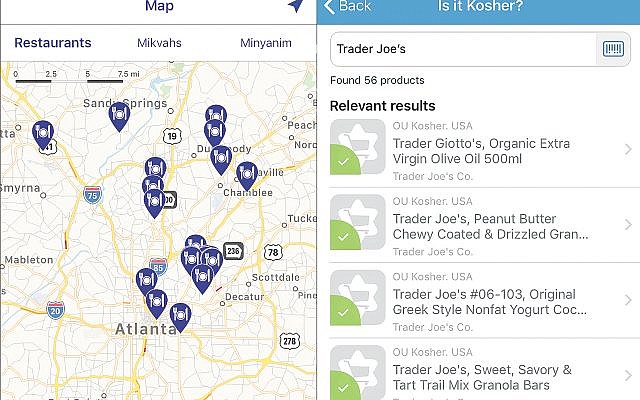Eating Kosher Keeps Getting Easier
Imagine telling great-great-grandparents from the shtetl that Jews today are able to waltz into a local Trader Joe’s and leave with an overflowing cart of kosher foods.

Imagine telling our great-great-grandparents that Jews today are able to waltz into a local Trader Joe’s and leave with an overflowing cart of kosher foods? It is incredible that our innovative society has evolved since life in the shtetl and has made eating kosher foods as easy as it should be.
An awesome tool for the kosher food shopper is the Kosher GPS, an app with a database compiled with a listing of kosher places to eat all over the USA, Canada, Panama, France, and numerous other countries. And more places are constantly being added. The database currently includes 2,000 kosher locations. All you do is open the app on your phone and it will show you where Jews eat in the area.
Kosher food today seems to fit in with a growing dietary trend in the U.S. known as intuitive eating. If any of your family members or friends are vegetarians, vegans, pescatarians, gluten-free, dairy-free, lactose-intolerant, on the keto diet, or doing the Whole-30, chances are you know who has chosen which path and all of the reasons why they think it’s so easy to do.
Of all the diet fads, intuitive eating has consistently ranked highly on the charts this year. Built on the foundation of being in tune with your body, intuitive eating encourages a lifestyle improvement rather than a restrictive “diet.” The truth behind the saying “you are what you eat” serves as a call to action.

Food you eat becomes part of your body’s composition and helps all bodily functions needed to live.
Not only is food necessary for survival, it’s a huge part of Jewish culture. We’ve been baking challahs and babkas and making matzah ball soup and latkes for generations.
Just as you wouldn’t tell Olympic athletes to eat a diet of only ice cream and cookies for the full month leading up to the opening ceremonies, G-d didn’t prescribe a diet for us that would prevent us from living our most efficient lives.
The discussion of kashrut is extensive. In short, the basics are as follows: 1. Pork and shellfish are never kosher. 2. Meat and milk are never eaten together. 3. Kosher meat comes from mammals that have both split hooves and chew their cud, if they are slaughtered in a specific and painless manner. 4. Kosher fish have fins and scales. 5. Fruits, vegetables and grains are basically always kosher if they are bug-free. Sounds pretty easy right? No one wants to eat bugs with their vegetables.
Kashrut may not fully make sense to us. If you’ve ever been to a kosher Shabbat meal, you can’t argue that when you left, you felt amazing in a way that you couldn’t easily explain in words. Kosher food to a Jew is like premium gas to a highly tuned sports car. The sports car has an engine that can run with regular gasoline; however, drivers can get clearly higher performance using premium gas.
Basically, there are so many choices Jews have when considering where and what to eat. If you focus on all the options, rather than all the restrictions, it is much more enjoyable and allows you to more easily see the many perks of keeping kosher.
Don’t knock it until you try it.
For more information about keeping kosher: www.oukosher.org/kosher-overview/kosher-certification-terms, www.crcweb.org/agency_list.php



comments